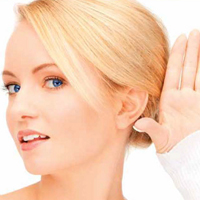
Whether it’s caused by loud concerts attended back in the day or regularly listening to music through ear buds, baby boomers and teenagers alike are now experiencing noise-induced hair loss.
Noise-induced hearing loss tends to crop up later in life, once the cumulative effects of decades of loud noise exposure take their toll. However, the condition increasingly affects Americans in their 30s, 20s or even younger.
Published in the Journal of the American Medical Association, one study found that the incidence of hearing loss in the United States in adolescents ages 12 to 19 increased from 14.9 percent in 1988 to 19.5 percent in 2006.
An audiologist with the Clark County School District, Nichole Sheldon commented to the Las Vegas Review-Journal that some studies show that about 12 percent of children ages 6 to 19 experience noise-induced hearing loss.
“We have seen an increase in recent years of referrals for hearing-related issues coming from elementary age, the fourth- or fifth-grade students,” Sheldon commented. She added that this hearing loss is likely early and noise-induced, since such students’ hearing loss is usually found in higher frequencies.
Las Vegas based audiologist Lan Anderson, co-owner of Anderson Audiology, comments that he is seeing more noise-induced hearing loss among younger generations.
“But I think at our four locations, we see two or three [young people] on the schedule every day almost, where it was just unheard of,” Anderson told the Review-Journal.
“I think we are definitely seeing more of that group, 20 to 35, and I’ve even seen high school [students] who already are showing hearing loss or complaining of hearing loss,” otolaryngology specialist Dr. Randall Lomax explained to the Review-Journal.
Sheldon notes that ear buds, placed directly into the ears, present sound differently to the ears than do external speakers or external headphones.
“In the past, we’d listen through our boom boxes with speakers or even headphones that go on top of the ear that allow some of the sound to escape into the environment,” Sheldon told the Review-Journal. “But with ear buds, we put them deep into our ear canal and the sound doesn’t escape, so it’s all redirected very close to the eardrum and we tend to turn up the volume a little more.”
Portable music players are often equipped with volume limiters, but the sound from such devices can hit a damaging level of 100 or more decibels, according to Sheldon.
Las Vegas pediatrician Dr. Laura Weidenfeld notes that even young children can experience sounds at potentially ear-damaging levels from toys like rattles and music devices.
Noise-induced hearing loss occurs when loud or prolonged sounds damage hair cells in the inner ear. Single loud noises like firecrackers and gunshots can certainly damage these nerve cells, but the hair cells are also damaged little by little over time by quieter but sustained noises.
If you or someone you know would like to learn more about hearing loss and how to treat it, please feel free to explore hearing loss topics or schedule a consultation and contact one of our representatives today!
Call 877-631-9511 for FREE Consultation



